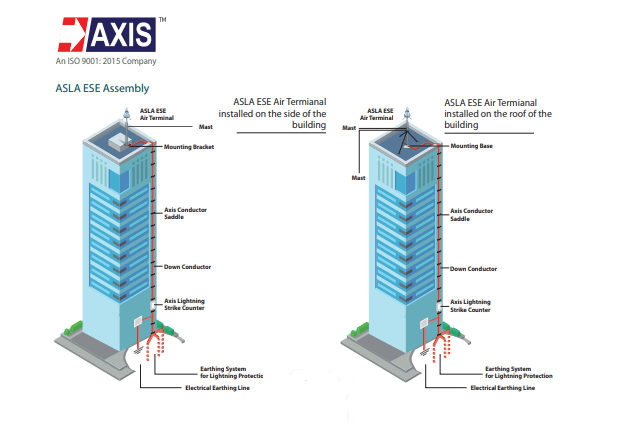How Does a Lightning Conductor Work?
The lightning conductor works on the principle of induction. When a fully charged cloud passes by the building, the conductor gets charged oppositely through induction and this acquired charge moves to the earth through the earthing system. The electrical length of its rod will always be greater than its physical length. The air becomes a conductor in the presence of a large electric field, and this electric field is strong around sharp objects than objects where the surface is flatter.
During the build-up of lightning, charges are induced at the top of the pointed lightning conductor rod by the cloud charge. The effective length of the conducting path of the conductor gets extended as the induced charge is sufficiently large and the air around the point of the lightning conductor acts as a conducting medium. Recent lightning conductors are slightly rounded because the electric field created by a charged round point conductor is smaller when compared to a sharp point. Hence, the air conducting cover a greater distance above the lightning conductor rod. The ionization of air around a lightning conductor rod then allows the lightning to strike more randomly.


Lightning conductors can also be called lightning rods, finials, air terminals, or strike termination devices. They are available in different types like hollow type, solid, pointed, rounded, flat strips or bristle brush-like. The main feature of a lightning rod is that the materials used to make the conductor are conductive materials such as copper and aluminium. Generally, copper and its alloys are used while manufacturing lightning protection devices. The core advantage of a lightning conductor rod is to make the air around it a conductor and contribute to the discharge of clouds. Contribute without the lightning being produced and minimize the risk (chances of a lightning strike). Many devices need protection from external damages such as step potential, touch potential etc.
The highly charged clouds are charged with high-density ionized electrons on the outer layer, which induces an opposite charge around the lightning conductor and is nearly equal to the potential present in the cloud. This phenomenon attracts the lightning towards accumulated opposite charges around the conductor, creating a virtual path for the lightning to drain out of the high potential electric charge along the conductor. The lightning rod is placed on the top-most corner, where the lightning rod is mounted on a mounting base and connected to an earthing rod or a ground rod through a copper cable. The lightning absorbed by the lightning rod is diverted through this path by avoiding any damage to the structure.

